#obligatory steins;gate reference
Text
Chaos;Child review
Steins;Gate; it’s one of the most popular visual novels ever made, for very, very good reason. While I had played my fair share visual novels before, namely Ace Attorney, Danganronpa, and Zero Escape, Steins;Gate was still a very special experience for me that instantly launched me into the wider world of visual novels. More than anything, though, it made me extremely curious about the rest of the franchise around it; not just the sequel to it, Steins;Gate 0, but the whole rest of the Science Adventure series.
For a bit of a rundown, the first game in this series, that many fans of Steins;Gate very likely have no clue about, was a title called Chaos;Head. Focusing on an extremely reclusive and paranoid high school student named Takumi Nishijou, who has his life thrown into chaos after witnessing the latest in a series of murders known as the New Generation Madness, it was an interesting story with a heavy focus on delusions, creating an interesting experience that, while still ultimately clear and conclusive, leaves you in the dark the majority of the time in regards to just what is happening, and how much is even real. While a good effort all around that served as a great base for Steins;Gate, it was ultimately held down by a lot of things, from smaller things like a pretty generic and unmemorable artstyle and mostly unremarkable voice acting, to much more noticeable things, from the slow, unfocused plot, to the underutilized cast of characters who never come together as a group, mostly just dropping in and out on an individual basis whenever the plot needs them, to the choice system of the game, the delusion trigger, which allows you to view a positive or negative scene Takumi imagines in response to surprising or stressful situations, being pretty much pointless, only rarely giving a better glimpse into Takumi’s characterization, to Takumi himself being extremely creepy, cowardly, and all around unlikeable, and not getting sufficient development across the story to make up for it, at least until the very last chapter. While it did get an updated version, Chaos;Head Noah, Chaos;Head was nonetheless buried beyond saving by Steins;Gate, not helped by not having an official localization to this day. As the cherry on top, it had a terrible anime adapation that tried to fit a fairly lengthy VN into a mere 12 episodes, completely wrecking the pacing, making the story even more confusing than was intended, and using an entire episode on useless filler to top it off.
The reason I went into detail on that is, well, the subject of today’s review; Chaos;Head’s sequel, Chaos;Child. Chaos;Child is in an interesting spot in the series, firstly because as of right now, it’s the only main VN in the series other than the two Steins;Gate titles to have an official localization, and while both Robotics;Notes and Robotics;Notes DaSH are set to be localized this year, it still means it’s the only other title around to experience until those come out, at least in an official fashion. Secondly, unlike Steins;Gate 0 and Robotics;Notes DaSH, Chaos;Child is only a thematic sequel, with the cast of Chaos;Head not returning, with the exception of one side character having a fairly prominent role, and a few references and cameos for others. The main cast is otherwise a clean slate, and concepts of Chaos;Head are taken at a different angle. Aside from helping keep things fresh, it also allows it to take its own pace with introducing and explaining the main concepts, making it still cohesive even without having gone through Chaos;Head, though it’s still connected in important ways. The main point is, you don’t have to go through Chaos;Head to enjoy Chaos;Child, which is very good considering the various problems surrounding Chaos;Head.
Now, the question is, is Chaos;Child worth going through by itself? The short answer is, absolutely, yes. It is a fantastic experience on par with Steins;Gate, and I would recommend it with all my passion. You can get it on PS4 or Steam. Seriously, go for it. As for the long answer, well, buckle in, because this’ll be a ride.
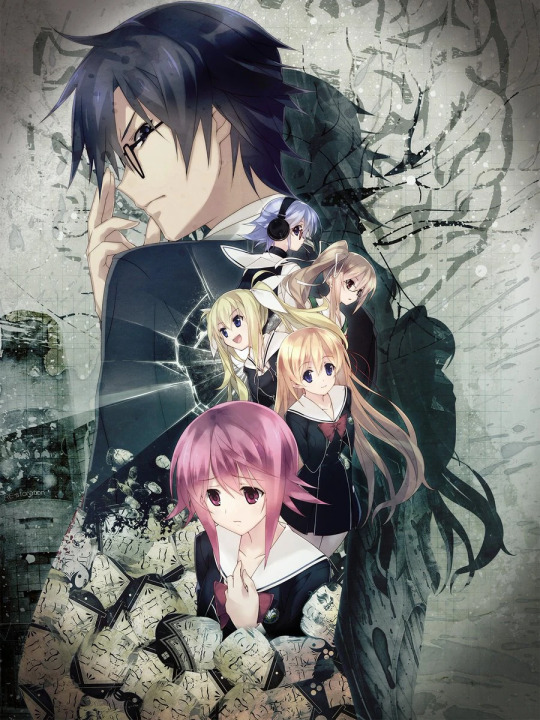
Chaos;Child takes place in 2015, 6 years after a devastating earthquake that utterly wrecked the ward of Shibuya during the events of Chaos;Head, leaving many physical and mental scars on the populace. Though Shibuya has since been rebuilt, a series of bizarre murders begin to occur on the days of the New Generation Madness, the series of killings that gripped Shibuya in the days before the earthquake. These killings, dubbed the Return of the New Generation Madness, leave the citizens of Shibuya morbidly captivated, much as the original incidents did, and unfortunately leave the police with no clues as to the identity of the culprit, seemingly leaving them to continue their crimes unopposed.
Enter Takuru Miyashiro, a senior at Hekiho Academy and president of its newspaper club. Takuru was orphaned by the Shibuya earthquake and adopted by Wataru Sakuma, a doctor who has a foster home in the same building as his clinic, though Takuru has moved out into an RV by the time of the game due to an argument with his foster sister, Nono Kurusu, the student council president and vice president of the newspaper club. With the help of the other members of the club, Serika Onoe, Takuru’s reckless and rather dense childhood friend, Shinji Itou, Takuru’s confident best friend with an interest in bizarre murders such as the New Generation Madness, and Hana Kazuki, a mute girl who spends most of her time playing MMOs in the club room, Takuru conducts his own investigation of the Return of the New Generation Madness despite Nono’s concerns for his safety, independently discovering many clues and connections, such as the presence of the mysterious and creepy “Sumo Stickers” at the site of each murder. After taking his investigations too far and stumbling upon the scene of the latest murder, Takuru finds increasing evidence of the killer having capabilities far beyond that of a normal human- and that his discoveries may have put him in danger of becoming the next victim.
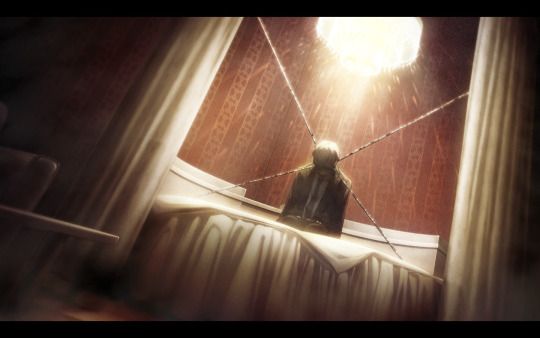
While this sounds much like the basic premise of Chaos;Head, in practice it’s very different. In Chaos;Heads, the New Gen murders, though certainly important, mostly just played out in the background, with Takumi rarely directly being involved. By contrast, the murders in Chaos;Child, and the mysteries around them, are the focus of the game, and it’s very worthy of it. The mysteries and reveals around them are downright fascinating, and gives the player just as many hints for them to follow as the characters, making for a very interesting plot to follow. Chaos;Child is also notable for being much, much darker than the previous entries in the series, which weren’t exactly flowers and rainbows themselves. The murders themselves are extremely gruesome and disturbing, the reveals don’t pull any sort of punches, and the majority of the game’s endings lie much closer to the bitter end of bittersweet, compared to, say, Steins;Gate’s endings. While it can get a bit draining by the end, Chaos;Child makes it work, never pushing you to the extent of becoming apathetic despite the horrors and tragedy of the plot, which is owed in large part to the well written and very sympathetic cast of characters.
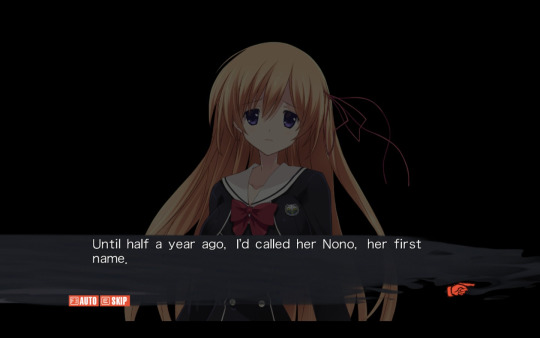
Everyone in the main cast manages to be interesting, fun to have around, or both. Takuru himself is a very good protagonist, despite having a very unlikeable start. He’s arrogant, reckless, extremely awkward, overly stubborn, and downright petty in a lot of ways, especially regarding his obsession with staying on the “right side” of information, not to mention him treating the murders as something exciting and a way to get famous. Despite all that, he has a lot of development across the game, and starts early on it. He’s also got a much rougher past than some of the previous protagonists, which helps explain how he grew into the person he is.

Some of the other more memorable members of the cast include Hinae Arimura, who, though hyper and friendly on the surface, hides a very sharp tongue and a fairly cynical nature, Mio Kunosato, the exceedingly harsh, obsessive, and resourceful scientist investigating the Return of the New Generation Madness on her own, who makes an interesting contrast to the rest of the cast just because of how completely unpleasant she is, Shinji, who manages to be a much more likeable character than some of the previous obligatory male friends in the series, and my personal favorite, Nono, who despite seemingly being an unfairly harsh big sister type, quickly establishes herself as an extremely caring person, with a lot more emotional baggage than she lets on. A good chunk of the game’s emotional moments involve her, particularly her attempts to fix her very strained relationship with Takuru.
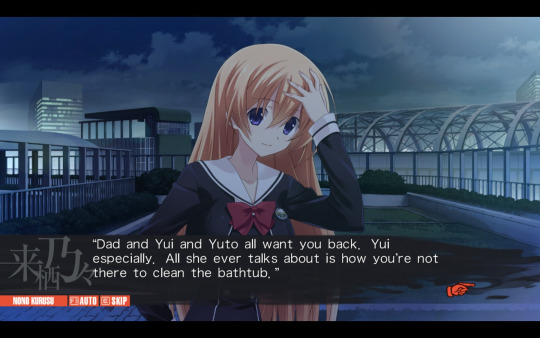
While all the characters make at least decent impressions to begin with, what helps them even further is the additional ending routes, branching off from the normal route depending on specific choices you make throughout the game. Compared to the way Steins;Gate handles its endings, these are full chapters, putting much more focus on characters such as Hinae and Hana, taking the plot in completely different directions. Not only are the stories of them interesting on their own, they do a great job of developing the characters and showing them from different perspectives.
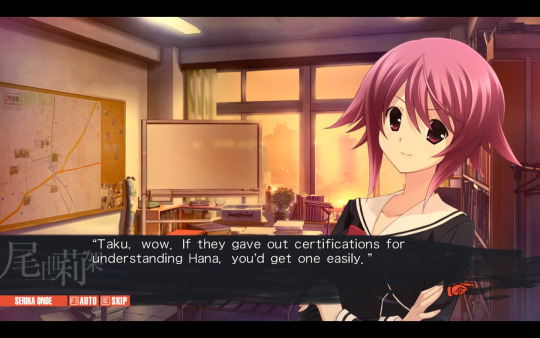
What caps off the writing is the absolutely fantastic atmosphere the game builds. It goes very heavy with horror elements compared to Chaos;Head, and doesn’t skimp in any area. While it’s got the visuals down, the main strength is the buildup, suspense, and narrative description, all of which is fantastically done. Tense scenes go at a steady enough pace to let each small thing sink in, without being drawn out enough that you lose interest, and the much less ambiguous nature on what scenes are real or not makes any shifts of that sort much more effectively jarring. It’s seriously one of my favorite atmospheres in a game, and makes for a great experience for anyone even slightly a fan of horror.

The subject of “fake” scenes brings me to the main gameplay element of Chaos;Child: the Delusion Trigger. Every once in a while, a situation will make Takuru imagine a positive or negative delusion regarding it, with you being able to choose one to view before snapping back to the regular scene like nothing happened. While a decent idea on paper, like in Chaos;Head, it really doesn’t add much most of the time, and despite being your method for accessing the different endings, it really doesn’t tie into them at all. At the least, though, it does a decent job of showing Takuru is much less mature than he tries to appear, and if nothing else, they’re gold mines for random screenshots. They also appear less and less frequently as the game goes on, which helps keep them from distracting from more serious scenes.



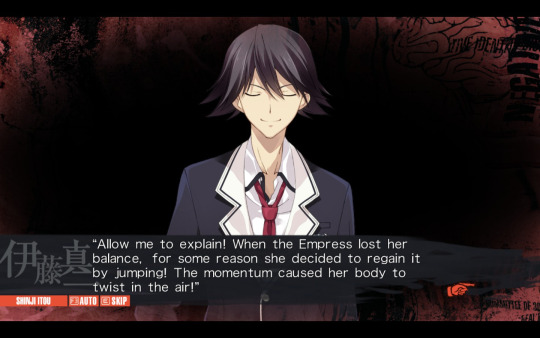
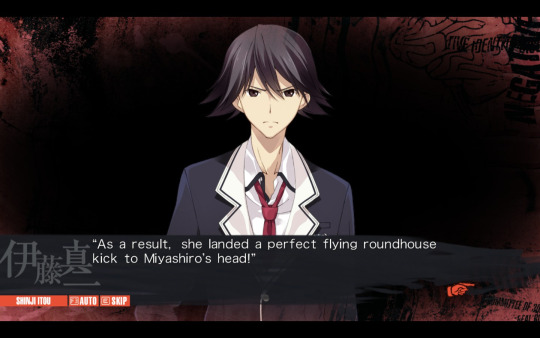

On a more technical side of things, visually speaking, I like the look of the game quite a bit. While it doesn’t reach the heights of Steins;Gate in character designs or the general artstyle, though that’s a very high bar to reach for, the sprites, backgrounds, and CGs are all very well drawn on their own, and the designs are at least more distinctive than in Chaos;Head. The visuals also do a large part to help with the atmosphere; while it looks light on the surface, many scenes use lighting filters that do a lot to help the mood, and the CGs do not disappoint when they get serious.




The UI also looks great, and furthers the atmosphere even more. From the shadowy ends of the dialogue boxes moving passively, to the menu screen’s rolling fog, to the odd borders of the screen during delusions, it has a very stylish look.
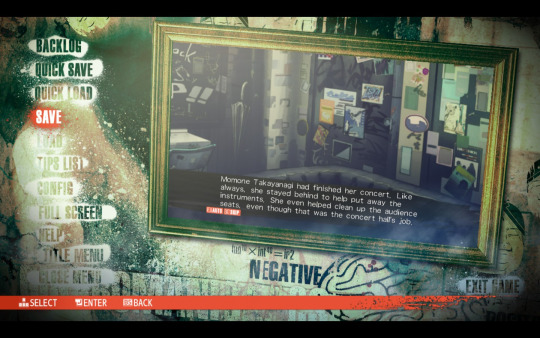
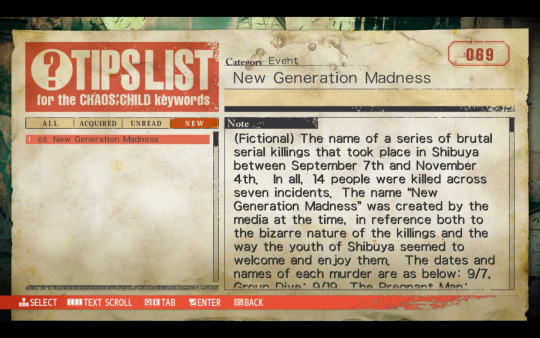

Chaos;Child doesn’t disappoint on the audio side of things either. Series composer Takeshi Abo puts out a great soundtrack, as usual, with many catchy or atmospheric themes, along with vocal themes that are absolutely fantastic. The voice acting is also very good, with just about everyone giving out a great performance, in particular Yoshitsugu Matsuoka as Takuru, Sumire Uesaka as Serika, Sarah Emi Bridcutt as Nono, Suzuko Mimori as Hinae, and Risa Taneda as Mio.

The last thing to mention is that Chaos;Child is a very long visual novel. Not quite as monsterous as some, but it’s still a significant time drain, and while there is an anime adaptation, it is a terrible alternative. While not outright awful by itself, especially compared to Chaos;Head’s anime, 12 episodes is simply not enough time to make the story work. Not only does it have to rush to make nearly every chapter fit into one episode, absolutely ruining the pacing, it doesn’t adapt the other endings in any way, making a lot of the characters come off as way less developed, and couldn’t even adapt the true ending at first, which is just disgraceful. The visual novel is the only real way to experience it. And now that we’re at this point, I suppose it’s conclusion time.
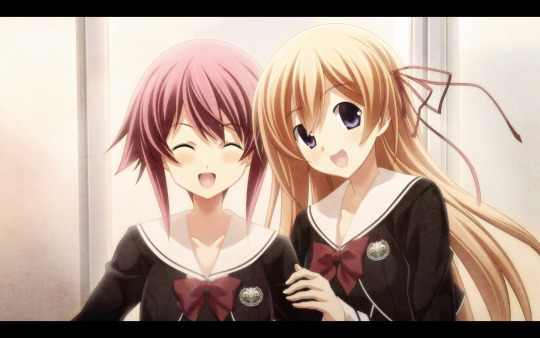
Is Chaos;Child something I would recommend? 100% absolutely. Between the fantastic atmosphere, great cast of characters, and fascinating and emotional story, it is a special kind of experience that proudly stands with Steins;Gate as one of the greatest visual novels out there, in a genre with many fantastic works. It can be a bit slow to start, but once it gets going, it stays an amazing experience.

With that giant rant out of the way, I’m off to start on the last thing in the series there is for me to tackle as of now: Steins;Gate 0. Till next time.
-Scout
30 notes
·
View notes
Text
Why You Should Play Chaos;Child [PlayStation Vita / PlayStation 4]
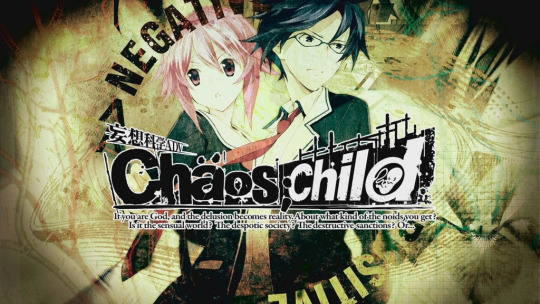
Chaos;Child is, in my opinion, one of the greatest stories ever written, though it has gotten far from the amount of attention it deserves. Please read through this and consider picking the game up! Don’t worry, there are no spoilers, though I should preface with saying that the game does feature some disturbingly-grotesque scenes, so this game probably isn’t for those of weak stomachs.
What is Chaos;Child about?
Chaos;Child’s story focuses around a high school student named Takuru Miyashiro, and his friends in the Newspaper Club at his school, Hekiho Academy. While the club is supposed to be responsible for reporting on the goings-on in and around the school, Miyashiro and [most of] his friends instead gain an interest in The Return of the New Generation Madness, a series of gruesome murders that emulate the original “New Generation Madness” (”NewGen”) from six years prior.
The students of the club - Takuru Miyashiro, his childhood friend Serika Onoe, his partner-in-crime Shinji Itou, the silent Hana Kazuki, and Miyashiro’s older sister Nono Kurusu - get wrapped up in the police investigation when Miyashiro and another club member are found at one of these murder sites, and the murders begin to follow the club around whether they like it or not.
Miyashiro wanting to uncover the Return of the New Generation Madness’ secrets leads them to learn about the psychic Gigalomaniacs that live among them, and have the ability to alter reality through the use of supernatural Di-Swords. Despite the fantastical approach to this story, Chaos;Child still takes a very scientific approach to explaining how these Gigalomaniacs and their powers exist.
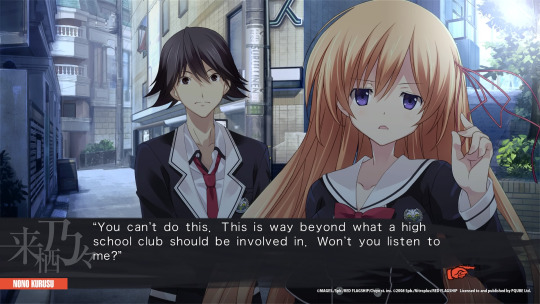
Does Chaos;Child have an anime series I can watch instead?
Chaos;Child does have an anime adaption... though I’d recommend you STAY CLEAR FROM IT. The anime does a terrible job at adapting the game’s story, as it rushes through the default route players are forced onto during their first playthrough but still incorporates elements from some of the other routes. This spoils a number of reveals that are done extremely-well in the game. An OVA of the game’s true ending has also been released, but as the main anime series is only 12 episodes and, again, cuts out most of the extremely well-written routes, makes the journey feel lackluster. If you really want to watch the anime series, I’d recommend doing so after you’ve played through the game.
What kind of game is Chaos;Child?
Chaos;Child is a murder mystery narrative video game that was released worldwide for the PlayStation Vita and PlayStation 4. The game was developed by 5pb., and serves as the fourth instalment of the Science Adventure franchise; most people are probably aware of Steins;Gate, and the Science Adventure (or SciADV) franchise is the universe in which that story, and several others, are set. Chaos;Child is technically the sequel to the first SciADV title, Chaos;Head, though Chaos;Child can be experienced with no knowledge of Chaos;Head or any other SciADV title.
Much like the other games in the Science Adventure series though, the game does a poor job of explaining how choices are made. Unlike most visual novels have the player make decisions via how they interact with the other characters, Chaos;Child instead has the player choose between a “Good” and “Bad” delusion via tilting the control stick left or right at specific moments; the player also has the option of ignoring these “Delusion Triggers”, which is necessary to achieve certain routes. The first time you go through the game’s story you are forced down a neutral route, but subsequent playthroughs centre have the player’s choice of delusion have repercussions that decide which of the different routes the player will go down. I’d recommend following a guide once you’ve played through the game once, as it can be difficult to discern which delusions have what consequences.
Though the visual novel genre is often scrutinized by mainstream audiences due to the most well-known examples being romantic games filled with fanservice and lewd scenes, Chaos;Child only has a literal handful of scenes with any explicit fanservice, though they do a fine job of giving a reason for them being there. The story of Chaos;Child is determined by the player choosing which “delusion” the main protagonist, Takuru Miyashiro, experiences. As he is a teenage boy, it’s not unusual to think that he would have some perverted thoughts about the girls in his life; these delusions are where all of the fanservice appears, though even then they’re spread very far apart.
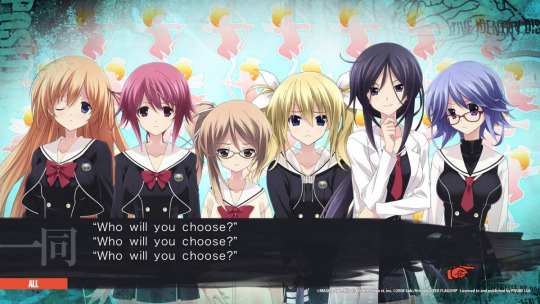
Before we get too far in, how does this story compare to Steins;Gate?
The common consensus between Science Adventure series fans (at least, those that I have seen) is that Chaos;Child tells a superior story to Steins;Gate. I’m not only inclined to agree with that, but I’d even go so far as to say that Chaos;Child is superior to Steins;Gate in literally every way.
How is Chaos;Child connected to Steins;Gate and the other SciADV games?
As previously mentioned, all games within the Science Adventure series take place within the same universe - though more specifically, the same multiverse due to Steins;Gate’s heavy use of time travel and thus the introduction and exploration of a large number of “worldlines”. The events of Steins;Gate begin in the same worldline that the Science Adventure series’ first instalment, Chaos;Head, occurred in, while all other main entries into the Science Adventure series occur in the worldline that is reached in the true ending on Steins;Gate: 1.048596%. Chaos;Child, as well as the series’ third instalment Robotics;Notes, thus only technically occur in-universe due to Rintaro Okabe’s actions in Steins;Gate (and Steins;Gate 0).
Chronologically, Chaos;Child takes place in 2015, six years after Chaos;Head. The actions that lead up to the finale of Chaos;Head cause a large artificial earthquake to heavily damage Shibuya. Chaos;Child is set in the same area, which has almost-completely recovered from the damage this earthquake caused.
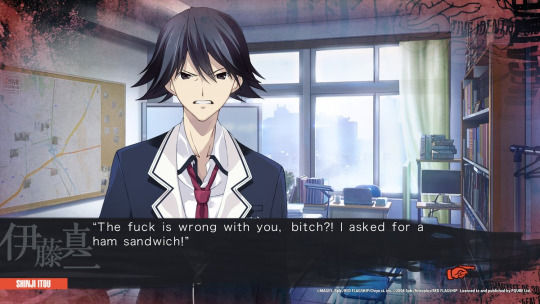
Do I have to know anything about the other SciADV titles to play Chaos;Child?
Not particularly. Being a thematic sequel to Chaos;Head, Chaos;Child references the events of this game far more than any of the other titles, though knowledge of that game isn’t really needed.
The events surrounding the original New Generation Madness series of murders are told through Chaos;Head, and while their existence in Chaos;Child’s story is important, they focus more on the official stories released by the police instead of the behind-the-scenes action the player of Chaos;Head experiences through the eyes of Takumi Nishijou. Besides the NewGen murders, only one character from Chaos;Head reappears in Chaos;Child, and some events told in the former are referenced more-often leading up to the story’s climax. Unfortunately, Chaos;Head hasn’t received an official English release (and as far as I know, the best fan translation is no longer being worked on), so even if it was truly important to the story, it would be difficult to play through it.
For those with knowledge of Steins;Gate or Robotics;Notes (or even Chaos;Head), there are smaller references to remind players that all of these stories exist in the same universe. Gunvarrel, the giant robot of justice which Robotics;Notes focuses around, is referenced during the obligatory school festival part of the story. There are also some indirect references to Makise Kurisu and Itaru Hashida by one of the story’s main characters, and a spin-off story (which hasn’t been localized) even tells of this character’s relationship with Kurisu.

Where can I buy this game?
The game is available digitally on the PlayStation store in Europe and North America. I believe PQube, who released the English version, also released the game physically in Europe and through online retailers for the Americas.
#steins;gate#steins gate#steins gate 0#steins;gate 0#makise kurisu#makise#kurisu makise#okabe rintarou#okabe rintaro#okarin#okabe#rintaro okabe#rintarou okabe#chaos head#chaos;head#chaos;child#sciadv#science adventure series#science adventure#sciadv series#takumi nishijou#nishijou takumi#nishijou#takuru miyashiro#miyashiro takuru#miyashiro#serika onoe#onoe#onoe serika#playstation
45 notes
·
View notes